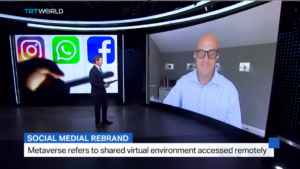In the 1950s, an economist and cognitive psychologist named Herbert Simon introduced the concept of cognitive heuristics. I refer to these heuristics as cognitive shortcuts because it’s an intrinsic human approach to avoid gathering data and doing work by relying on our past experiences and assumptions. Simon theorized that people strive to make rational choices, but human judgment is limited by cognitive load. Cognitive load is essentially the limited working memory that humans are bound by; there is a limit to the number of facts and data that we can keep track of at one time. As a result, we have come up with cognitive shortcuts that help us to make low-data decisions.
Purely rational decisions would require weighing all data and alternatives such as potential costs against possible benefits: pros versus cons. But the fact is that we simply don’t have the time to make purely rational decisions for every single course of action. Even finding the data to inform our choices isn’t feasible for many of our day-to-day interactions.
Cognitive shortcuts allow us to make decisions on limited data and time
I attribute cognitive heuristics to the thousands of years humans have spent searching for ways to measure food quality, mates or any other “thing” that may have dire and negative consequences if chosen incorrectly. As a result, we have built thousands of cognitive shortcuts to make decisions on limited data and time. These shortcuts involve searching for quality signals, such as the reddest and least blemished apple. The same bright red and unblemished apple could contain worms or be rotten to the core, but for the most part, a very red and unblemished apple signals that the apple will probably be safe to eat. Even in the modern age, we approach decision-making with this signal-centered thinking.
Personal branding is the apple equivalent of professional quality signaling. Your professional picture, completed LinkedIn profile, polished resume, detailed Google knowledge panel, accomplishments, degrees obtained and past employers are all quality signaling that you want the viewer to judge you on. Placing this information at the forefront helps you put your best foot forward in the online age. People looking for data on you will see your quality signals; if the quality is lacking, that’s where their search will end.
Personal branding gives you a chance to shape the narrative
Personal branding is the act of shaping the narrative of what people can find out about you. When quality signals are experienced as a whole, they can portray you favorably, if done correctly. This concept is referred to as the halo or horn effect. As an individual, you experience cognitive biases based on your own social concepts. This can lead to inaccurate assumptions based on quality signaling. For example, if your LinkedIn photo is polished and professional, the assumption is that you too are polished, professional and trustworthy. If the available data shows a disheveled individual, there’s an immediate bias against you that suggests you’re someone who is unreliable and unprepared for the job.
If the available data builds on that bad photo — your LinkedIn profile is spotty and your Google knowledge panel is missing — the assumptions could be that you have no past accomplishments to speak of, you did not go to school, and you have no credible past employers. Someone who is looking you up will have no data to go by and may assume the worst of you. He or she will stop at this stage even if those assumptions aren’t true. Your personal brand can’t have gaps or discrepancies between platforms if you want to signal your quality. This could be why you’re not able to get to the interview stage when applying for jobs or why a client won’t sign a contract with you after your initial meeting. Consider what your narrative says about you and how quality signals can enhance your personal brand.
The first step is becoming aware of these quality signals. Do some research on what you’re conveying with your profile picture, platform activity, list of accomplishments, etc. Find out what unconscious biases you may encounter and use that information to your advantage. You’re not meant to manipulate or misrepresent the truth about yourself — just portray it in a way that enhances your personal brand. It’s human nature to make assumptions and use cognitive shortcuts when gathering data, so use that intrinsic truth to empower your narrative and build your brand.



